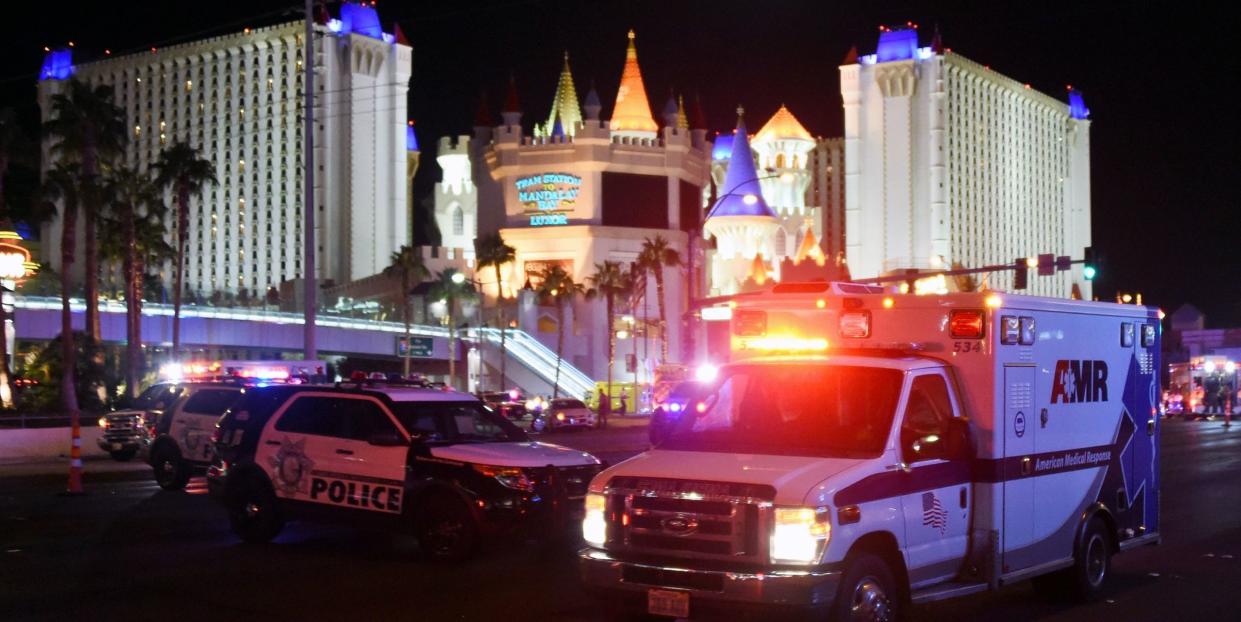What It Was Like to Be a Paramedic at the Las Vegas Shooting

In the aftermath of Sunday night's horrific Las Vegas mass shooting, eyewitnesses have begun to share harrowing tales of the horrors - and heroism - that unfolded. Now, some of the emergency personnel who ran toward the scene are getting a chance to decompress and share their stories.
Dean Weber, a 31-year-old paramedic who normally works the Vegas strip, shared his account with People. The night started uneventfully, but when he and his partner heard about the shooting, they went straight to the scene.
They arrived to a squad of ambulances and an uncertain safety situation:
"That's when we knew it was really serious. The cops were telling me that we couldn't go to the area yet, because it wasn't secure. They wanted to make sure that we weren't going to be targets. So we had to wait for an area to be cleared before we could go help."
When paramedics and EMTs were finally allowed to begin clearing and treating patients, they were still surrounded by officers with guns drawn:
"There were cops all around the perimeter of the area to provide cover in case we needed it. I had never been so scared in my life. I just kept thinking the shooting would start up again."
Even though Weber and others were able to reach victims, there were strict rules about who to take out first. A first responder team had gone through the shooting site and done a pass, flagging victims with color-coded tags designing three ranks of injuries: Green (minor injuries), Yellow (non-life-threatening injuries) and Red (life-threatening injuries).
While treating that first wave of victims, Weber had to pass many more by:
"We had to take the red-tagged patients first. But it's not always that easy. People were begging me to take them because they were in so much pain. One woman grabbed at my ankle and we locked eyes. All she could say was 'please.' She had tears all over her face. But she was tagged in yellow, and there were people in red. So I had to say, 'I'm so sorry. Someone will be back for you soon.'
There was another man who was tagged green sitting next to a yellow. He said, 'Please help my girlfriend,' but I couldn't."
As time passed, Weber and his fellow paramedics had to make quick calls about who to rescue next, as a non-life-threatening injury can, over the course of minutes, escalate into a life-threatening one:
"[The victims are] all losing blood. They're in pain and going into shock ... We had to make quick decisions.
There were officers helping us triage, but there was still some discretion. Do I pick up this red tag or that red tag? Which patient do we take? What if we choose the wrong one? It can be agonizing."
When morning came, Weber recounted, "I just hugged my partner and cried ... It was like a war zone. It's the worst thing I've ever seen in my entire life, and I hope that no one ever has to go through it again. It was pure hell."
Read Weber's whole account here.
You Might Also Like

